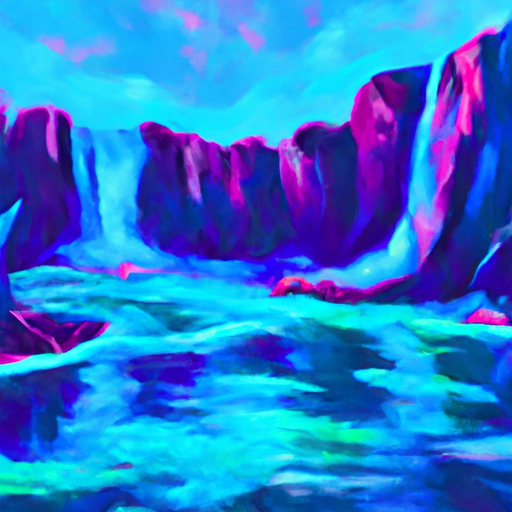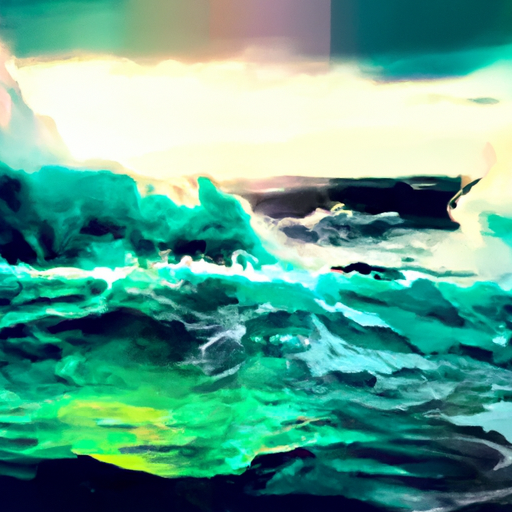
-
Table of Contents
- Abstract Landscapes: Designing the Unseen
- The Essence of Abstract Landscapes
- The Design Principles of Abstract Landscapes
- 1. Simplification
- 2. Color and Texture
- 3. Composition and Balance
- 4. Abstraction and Symbolism
- Case Studies: Abstract Landscapes in Practice
- 1. Gerhard Richter
- 2. Zaria Forman
- 3. James Turrell
- The Impact of Abstract Landscapes
- 1. Emotional Connection
- 2. Stimulating Imagination
- 3. Environmental Awareness
- Summary
Abstract Landscapes: Designing the Unseen

Abstract landscapes have gained significant popularity in the world of design and art. They offer a unique and captivating way to represent the unseen aspects of nature and the environment. This article explores the concept of abstract landscapes, their design principles, and the impact they have on our perception of the world around us.
The Essence of Abstract Landscapes
Abstract landscapes are a departure from traditional representational art, where the focus is on capturing the physical likeness of a scene. Instead, abstract landscapes aim to convey the essence and emotions associated with a particular place or environment. They often use non-representational forms, colors, and textures to create a visual representation that goes beyond the literal interpretation of a landscape.
By distilling the elements of a landscape into their most basic forms, abstract landscapes allow viewers to engage with the unseen aspects of nature. They encourage us to explore our own interpretations and emotions, creating a more personal and subjective experience.
The Design Principles of Abstract Landscapes
Creating a compelling abstract landscape requires a deep understanding of design principles and techniques. Here are some key principles that designers and artists employ when working with abstract landscapes:
1. Simplification
Abstract landscapes often simplify the complex details of a scene into basic shapes and forms. By reducing the elements to their essential components, designers can create a more focused and impactful representation. This simplification allows viewers to connect with the underlying emotions and atmosphere of the landscape.
2. Color and Texture
Color and texture play a crucial role in abstract landscapes. Designers use a wide range of colors to evoke specific moods and emotions. Vibrant and bold colors can create a sense of energy and excitement, while muted and subtle tones can convey tranquility and calmness. Texture, whether through brushstrokes or digital manipulation, adds depth and visual interest to the artwork.
3. Composition and Balance
Composition is essential in abstract landscapes to create a harmonious and balanced visual experience. Designers carefully arrange the elements within the artwork to guide the viewer’s eye and create a sense of unity. Balancing contrasting shapes, colors, and textures helps create a dynamic and visually pleasing composition.
4. Abstraction and Symbolism
Abstract landscapes often incorporate elements of abstraction and symbolism to convey deeper meanings. Shapes and forms may be distorted or exaggerated to represent emotions or concepts associated with the landscape. Symbolic elements, such as a lone tree or a flowing river, can evoke specific ideas or themes.
Case Studies: Abstract Landscapes in Practice
Several artists and designers have successfully incorporated abstract landscapes into their work. Let’s explore a few notable case studies:
1. Gerhard Richter
Gerhard Richter, a renowned German artist, has created numerous abstract landscapes throughout his career. His paintings often feature blurred and smudged forms that evoke a sense of mystery and ambiguity. Richter’s use of color and texture adds depth and emotion to his abstract landscapes, inviting viewers to interpret the unseen aspects of nature.
2. Zaria Forman
Zaria Forman, an American artist, specializes in creating large-scale pastel drawings of abstract landscapes. Her work focuses on the beauty and fragility of ice formations in remote regions. Forman’s meticulous attention to detail and use of vibrant colors create a sense of awe and wonder, highlighting the importance of preserving these unseen landscapes.
3. James Turrell
James Turrell, an American artist, is known for his immersive light installations that explore perception and the experience of space. His work often blurs the boundaries between the physical and the abstract, creating ethereal landscapes that challenge our understanding of reality. Turrell’s installations invite viewers to contemplate the unseen aspects of light and space.
The Impact of Abstract Landscapes
Abstract landscapes have a profound impact on our perception of the world around us. Here are some key ways in which they influence our understanding and appreciation of nature:
1. Emotional Connection
Abstract landscapes tap into our emotions and allow us to connect with nature on a deeper level. By distilling the essence of a landscape, they evoke specific moods and feelings, creating a more personal and intimate experience. This emotional connection fosters a greater appreciation for the unseen aspects of nature.
2. Stimulating Imagination
Abstract landscapes stimulate our imagination and encourage us to explore different interpretations. They invite us to fill in the gaps and create our own narratives, fostering a sense of curiosity and wonder. This engagement with our imagination enhances our overall experience and understanding of the unseen aspects of nature.
3. Environmental Awareness
Abstract landscapes can raise awareness about environmental issues and the importance of preserving our natural surroundings. By presenting nature in a unique and thought-provoking way, they draw attention to the unseen beauty and fragility of our ecosystems. This awareness can inspire action and a greater commitment to environmental conservation.
Summary
Abstract landscapes offer a captivating and unique way to represent the unseen aspects of nature. By distilling landscapes into their essential forms, colors, and textures, designers and artists create a visual representation that goes beyond the literal interpretation of a scene. Through the use of design principles such as simplification, color and texture, composition and balance, and abstraction and symbolism, abstract landscapes evoke emotions, stimulate imagination, and raise environmental awareness. They provide viewers with a personal and subjective experience, fostering a deeper connection and appreciation for the unseen aspects of nature.
